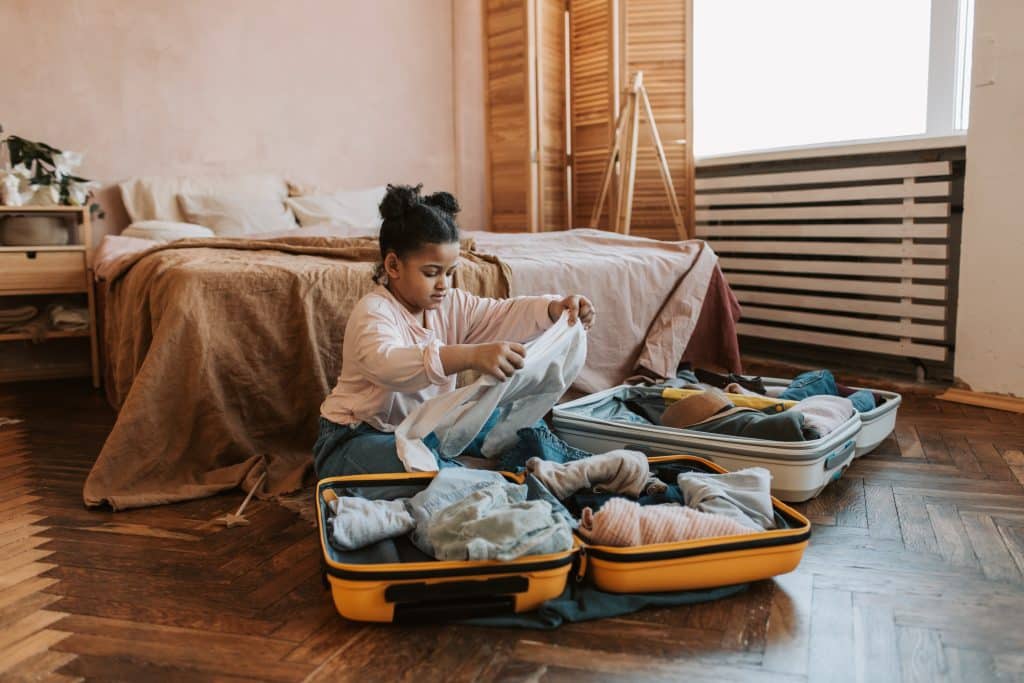Navigating the world of sensory defensiveness can feel like a daunting task, but rest assured, we’re here to help! In this blog post, we’ll guide you through a step-by-step process to support your neurodivergent child in overcoming sensory defensiveness. From identifying triggers to creating a calming environment, we’ve got you covered. So let’s begin our journey together!
Table of Contents
Step 1: Identify Triggers
The first step in helping your kid with sensory defensiveness is to pinpoint the specific stimuli that trigger their discomfort. To do this, pay attention to your child’s reactions and look for any patterns. For example, do they become agitated in crowded places, or do certain textures seem to irritate them?
| Common Triggers | Examples |
|---|---|
| Auditory | Loud noises, sudden sounds, multiple people talking at once |
| Tactile | Scratchy fabrics, sticky substances, unexpected touch |
| Visual | Bright lights, flashing lights, busy patterns |
| Olfactory/Gustatory | Strong smells, specific food textures or flavors |
By understanding their triggers, you can better help them cope with sensory challenges and create a more comfortable environment. Find out how autism is diagnosed here.
Step 2: Create a Sensory Diet
Next, it’s time to create a sensory diet tailored to your child’s unique sensory preferences and aversions. A sensory diet is a personalized plan that incorporates various sensory activities and experiences to help your child self-regulate.
For instance, if your child struggles with loud noises, you might include calming auditory experiences like soft music or nature sounds. On the other hand, if tactile sensations are an issue, explore different textures and materials that your child finds soothing.

Read More: What is a Sensory Diet?
To make it even more effective, consider incorporating Goally, a learning tablet designed specifically for neurodivergent kids. Goally offers various apps and resources that can help you create a sensory diet tailored to your child’s needs.
Step 3: Establish a Safe Space
In addition to addressing your child’s sensory needs, it’s essential to have a designated safe space at home where they can retreat when feeling overwhelmed. This space should be calming and cater to their sensory preferences.
SPONSORED BY: Goally
Goally’s Kid’s Tablet has one of the largest libraries of skill-building videos (like “How to Share” and “What To Do When You’re Lost”) in the Goal Mine app.👇
For example, you can include items like:
- Weighted blankets
- Noise-canceling headphones
- Dimmable lights
- Soft, cozy fabrics
Creating a comfortable environment tailored to their sensitivities will help your kid feel more secure and better able to cope with sensory defensiveness.
Step 4: Educate and Communicate
It’s not just about addressing your child’s sensory needs; it’s also important to educate those around them about sensory defensiveness. This includes teachers, family members, and friends. By fostering open communication, you can create a support network that understands your child’s unique needs and helps them navigate sensory challenges.

Read more: What Things Make ADHD Worse?
Some ways to educate others include:
- Sharing articles or books on sensory defensiveness
- Discussing your child’s specific triggers and coping strategies
- Encouraging empathy and understanding
The more people understand your child’s sensory defensiveness, the better equipped they’ll be to support them.
Step 5: Seek Professional Help
If your child’s sensory defensiveness persists or worsens, don’t hesitate to seek assistance from a professional, such as an occupational therapist. They can provide further guidance on creating a sensory diet, implementing coping strategies, and addressing any issues that may be playing into your child’s sensory challenges. Goally can also be a valuable tool in this process, providing resources and support for both you and the professional working with your child.
Step 6: Practice Patience and Flexibility
Above all, remember that every kid is different, and what works for one kid may not work for another. Be patient and flexible as you try different strategies to help your child cope with sensory defensiveness. Celebrate small victories and acknowledge that progress may be gradual, but it’s still progress.

Goally | Best Videos to Teach Life Skills
Give your kid an independent future. Goally has 100+ video classes teaching life skills like “How to Choose a Restaurant,” “How to Interrupt Politely,” and “How to Get Ready for School.”
Goally takes kids on an adventure that includes interactive practice and checkpoints along the way! No web browsers, YouTube, or social media.
In short, helping your child navigate sensory defensiveness can be a challenge, but with the correct approach and support, you can make a significant difference in their lives. By identifying triggers, creating a sensory diet, establishing a safe space, educating others, seeking professional help, and practicing patience, you’ll be well-equipped to help your child overcome sensory challenges and thrive. With the help of Goally and a strong support network, you and your child can conquer sensory defensiveness together.
FAQ’s About Sensory Defensiveness
What is sensory defensiveness? Sensory defensiveness is a condition where normal sensory stimuli, such as touch, sound, or light, become overwhelming or uncomfortable. It's often associated with sensory processing disorders and autism.
What are some common signs of sensory defensiveness in children? Common signs can include extreme reactions to textures, tastes, sounds, or lights; avoiding certain activities or places; and difficulty with changes in routine or environment.
How can parents support a child with sensory defensiveness? Parents can support their child by understanding their sensory triggers, creating a sensory-friendly environment, and using strategies like sensory breaks or sensory integration therapy.
Are there any apps that can help children with sensory defensiveness? Yes, there are numerous apps such as "Birdhouse for Autism" and "MindShift" that offer tools for managing sensory sensitivities and improving emotional regulation.
Can a visual schedule help a child with sensory defensiveness? Yes, visual schedules can provide structure and predictability, which can help a child with sensory defensiveness to feel more comfortable and prepared for different sensory experiences.
This post was originally published on 06/01/2023. It was updated on 08/03/2023.

Goally
We help parents teach their kids life skills, like doing bedtime and morning independently. Backed by science, we incorporate evidence-based practices and expert-informed designs in all of our apps and content.






